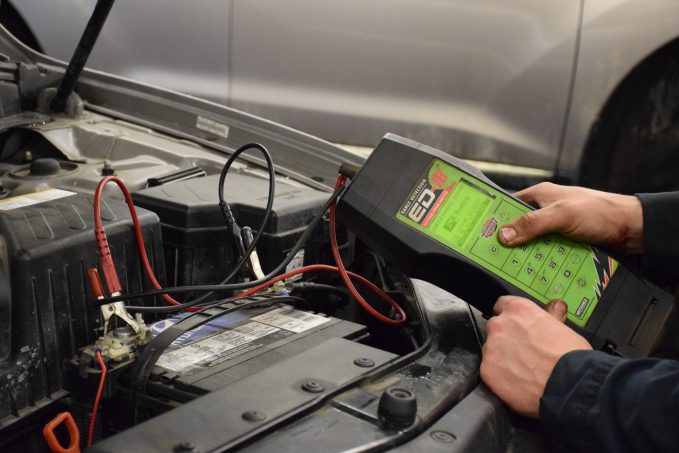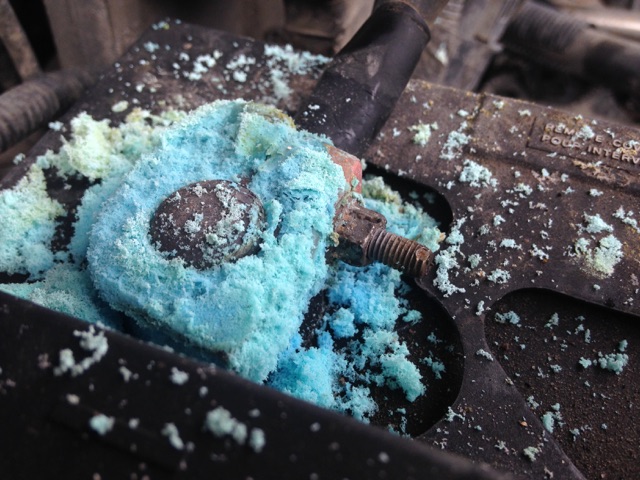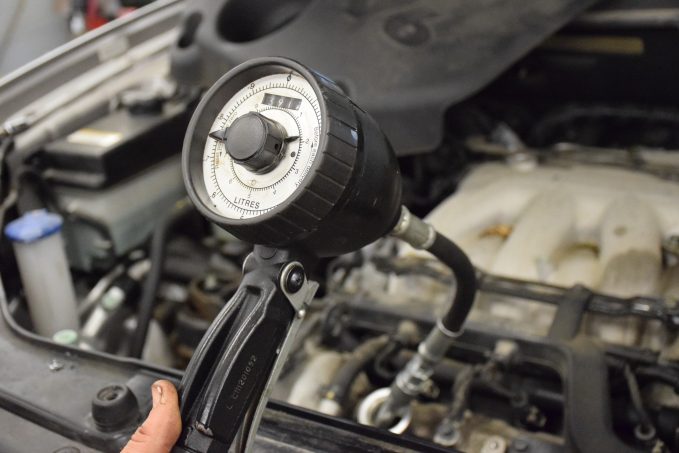Batteries are not exciting things. They store power. They make our stuff work. You have to replace or recharge them sometimes. You can get new ones almost anywhere.
Nobody thinks much about batteries. This is a funny thing since batteries are everywhere. There are probably at least a handful batteries within a 20-foot radius of you right now and you probably care about none of them. There is at least one battery in your life, however, that you should be thinking about right now, and it’s the battery in a vehicle. Remember to be extra careful when working in a garage because there might be an old oil spillage where you might fall, in case this happens and you are working in someone else garage, here is what to do after a slip and fall accident.
“I hope someone visits me, soon,” the battery in your car says. “It’s getting cold out, winter is coming, and I could use me a little bit of lovin’ before the cold and ice show up. Why does nobody ever visit?”
Your car battery is lonely. It doesn’t ask for much. But right now, it wants you to give it a little love. After all, when the cold and snow and ice arrive, that lowly battery begins the hardest part of its year.
Do you like being late for meetings because your car won’t start? Do you like playing a game of “OMG WILL IT START TODAY?” every morning before work? Does being stranded at the airport Park-N-Fly at 3 am sound like a thing you’d enjoy? Are you a fan of inventing new swear words when you turn your car’s key, only to be met with the sound of silence?
Probably not.
We’ve compiled some tips below on how to give your battery a little TLC before and during winter so your winter doesn’t suck quite as much.
Check It: Even if your older battery has been firing up reliably all summer and fall, it could still be on the verge of failure. If that’s the case, you can expect a big letdown on the first really cold morning of the winter.
Solution? Have the battery checked. Special battery-testing equipment runs your battery through a barrage of tests and spits out a result. The result might be that your battery is perfect, fine, or totally mucked — even if it still seems to be working. Do not underestimate the speed with which a few cold starts on a few cold mornings can kill a weak battery.
For maximum peace of mind, have your car’s battery scanned before the cold weather arrives, and replace it accordingly.
Sometimes, checking your battery means taking it out of your vehicle and bringing it to a place like an auto-parts store. Many service centers can run a battery check for you in minutes without even removing the battery from your car.
“We usually check the battery condition when performing an oil change at no extra charge,” automotive service technician Paul Kennaley says. “Customers appreciate it and it takes less than a minute. Plus, it could save you a major headache on those cold winter mornings.”
Clean It: Like us humans, batteries can accumulate disgusting levels of unsightly gunk if not cleaned regularly. Because of science and chemicals, the terminals of the battery (which are the metal bits that poke out of the top or side to facilitate an electrical connection) are magnets for this sort of gunk. Mostly, visible battery gunk is made of dirt, salts, crusty yuckiness, and some byproducts of gasses formed inside of your battery as they escape near the terminals.
Pop your hood and look at the battery terminals. If you see a crystallized mess that resembles a crust of salt, then you’ll want to clean your battery terminals pronto. Not only can the accumulations be harmful to your battery and things near it, it can also cause your battery to discharge even when the vehicle isn’t’ running. If you see this sort of corrosion, chances are that your battery is slowly being drained at all times. With winter approaching, your battery needs all the help it can get — and if it’s being discharged by a buildup of semi-conductive crudsicles, you’ll need to do something about it.
Easy solution here. You’ll need a battery terminal cleaning solution (available from your favorite auto parts store), and a wire brush. Follow the instructions on the cleaner, which is typically applied after the battery cables are removed for safety. Brush the corrosion away with the wire brush to reveal shiny, clean terminals.
ALSO SEE: Why You Absolutely Need Winter Tires, Even If You Have All-Wheel Drive
You’ll also want to spray some battery terminal lube onto the terminals to help fend off future buildup. If you’re doing this job yourself, be sure to reconnect the battery cables snugly, ensuring there’s a good connection. Clean and lubricate the battery cable connections, too.
If you’re not comfortable handling this maintenance on your own, ask your favorite mechanic for help, perhaps while your car is in for a pre-winter oil change.
Help It: There are a few ways you can help your battery to make its life less miserable when the weather turns cold.
First, consider the use of a trickle charger, which can be purchased on the cheap from your favorite auto parts store. You hook it up to your battery and plug it into an electrical outlet when you won’t be driving for a while. The trickle charger works to maintain a full battery charge and is a great idea to use when you won’t be driving for a few days or more — and especially if you’ve got a modern car with high-draw electronics.
ALSO SEE: 5 Tips When Making the Switch to Winter Tires
Second, consider using synthetic motor oil if you don’t already, even just for the colder months. Synthetic motor oil is pricey and may be overkill for some vehicles, but using it makes it much easier for your battery to turn your engine over in extreme cold. This can help ensure your car starts every time and doesn’t kill your battery in the process.
Third tip? Use the block heater. Plug your car in when it’s going to get really cold and your engine will be toasty warm under the hood. Starting a warm engine is much easier on your battery than starting a cold one, which means a higher likelihood of cold-start success in the middle of February and less drain on your battery throughout winter.
Here’s a final tip: if you do need to jump start your car to get it started this winter, be sure to drive it a good while before turning it off again to help the battery recharge. Do not turn the engine off again until your parked at a safe location where you won’t freeze if your ride fails to restart.











